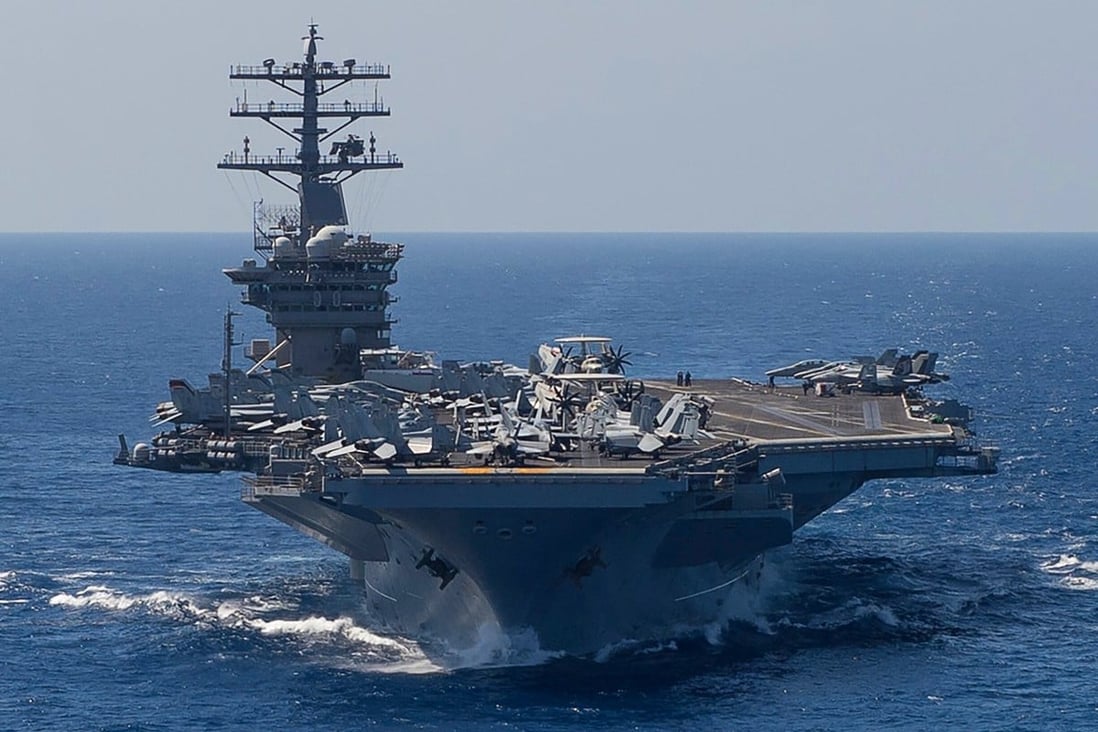
The USS Nimitz carrier strike group is heading into the Indo-Pacific region after serving an extended period in the Middle East.
The group had served more than 270 days in the Central Command and was moving into the Indo-Pacific region, Pentagon spokesman John Kirby said on Tuesday.
The Nimitz was conducting flight operations in the Arabian Sea last week. The strike group has spent the past six-months in the Middle East as tensions between Iran and Washington simmered after the US boosted its military presence from May.
On December 31, former acting defence secretary Chris Miller ordered the strike group to head home, but the call was overturned in early January with threats from Iran around the time of the first anniversary of the killing of Iranian military leader Qassem Soleimani by the US.
But tensions between Iran and the US eased as US President Joe Biden pledged to renew nuclear programme negotiations with Tehran.
The Pentagon said the departure of the Nimitz meant there was no US carrier operating in the Central Command area of operations.
Kirby said Secretary of Defence Lloyd Austin believed America had “a robust presence in the Middle East”.
US service members were based in many nations in the Persian Gulf and there was more than enough air power to counter any adversary, Kirby added.
Austin must balance requirements from various parts of the world, and the United States did not have an unlimited number of aircraft carriers, he said.
‘Independence means war’: China’s defence ministry warns Biden off Taiwan
Last week, a US aircraft carrier group led by the USS Theodore Roosevelt entered the South China Sea to promote “freedom of the seas”, triggering strong reactions from Beijing.
The People’s Liberation Army sent more than a dozen aircraft into the southwestern corner of Taiwan’s air defence zone, monitoring the movements of the carrier strike group.
The US, Japan and Australia will also soon host a military exercise at the Andersen Air Force Base in Guam, drills that are aimed at increasing the US’ ability to use difficult locations for combat operations.
Jeremy Sloane, commander of the 36th Wing at Andersen, said China and Russia could put overseas US bases at risk, and the US Air Force must evolve from its dependence on well-established airfields.
China is strengthening its military presence in the Indo-Pacific region, especially in areas close to the South China Sea, and often expresses dismay at the deployment of military vessels by the US in the region, saying it is violating its sovereignty.
An earlier report by state-owned English-language broadcaster China Global Television Network showed troops stationed in the South China Sea learning battlefield English as they increasingly encountered foreign troops.
The report said the language skill was “essential” and “must be picked up”.
During a recent military exercise on an island reef in the Paracel Islands – known in China as the Xisha Islands – part of the drill included using English when engaging with “enemy” troops. One soldier was heard in the broadcast to say in English: “You are surrounded. Surrender.”
“In recent years, countries and forces outside China have been provoking troubles and creating tensions in the South China Sea. The naval forces in the Southern Theatre Command are at the forefront of safeguarding rights as well as maintaining regional peace and stability in the South China Sea,” the report said.







